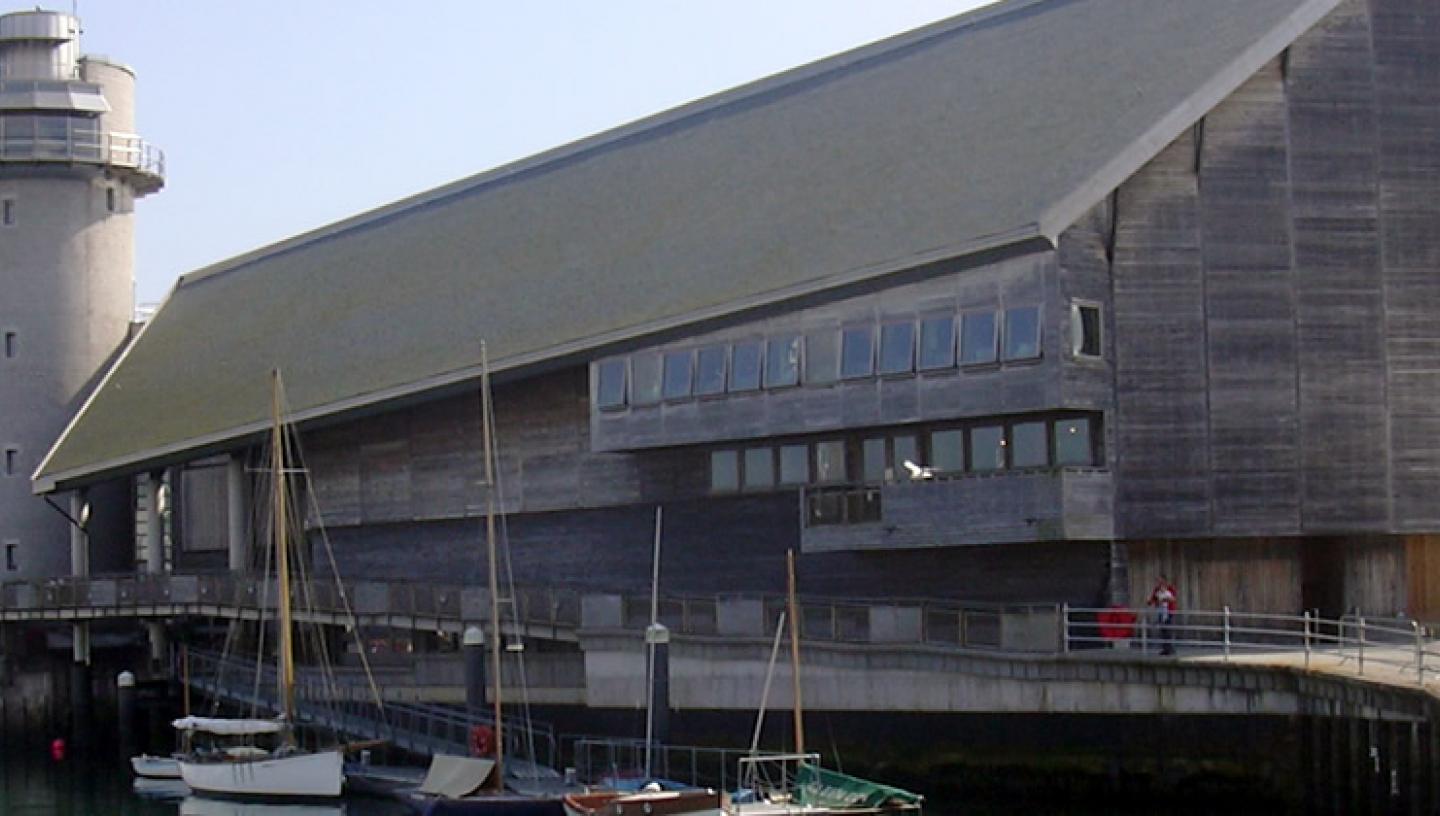
All of these museums are well worth a visit if you’re nearby.
Cotehele Quay and Shamrock
The unspoilt river quay at the National Trust property of Cotehele, near Saltash, Cornwall, is home to the Tamar barge, Shamrock, which was fully restored by the National Trust and the National Maritime Museum.
Cotehele Quay is an unspoilt quay on the River Tamar in the wooded grounds of the medieval manor house, Cotehele near Saltash in Cornwall. This National Trust property makes a fine setting for the restored Tamar barge Shamrock.
Built in 1899, this 57-foot ketch carried cargo of various kinds up and down the Tamar for many years. In the late 1930s she relocated to the Truro River and worked several Cornish ports. In 1962 she was used as a core sample test drilling barge in St Ives Bay. Then in 1966 she became a salvage vessel and soon fell into disrepair.
The National Trust acquired Shamrock in 1974 and fully restored her to sea-going condition in association with the National Maritime Museum. She is now solely owned by the National Trust.
You can discover Shamrock’s full story at the Quay Museum at Cotehele, which also includes displays about river and coastal trade in South Devon and Cornwall and the Tamar Valley’s shipbuilding, mining and quarrying and industries.
Find out more about Cotehele Quay and Shamrock on the National Trust website
Find out more about Shamrock on the National Historic Ships website
Herschel Museum of Astronomy
The Herschel Museum of Astronomy celebrates the many achievements of the Herschel family. It’s based at the house in Bath where William Herschel discovered Uranus in 1781.
As well as being distinguished astronomers, William and his sister Caroline were both gifted musicians. In 1780 William was appointed director of the Bath orchestra and Caroline often appeared as a soprano soloist. Brothers Dietrich, Alexander and Jakob were also talented musicians.
William Herschel’s observations helped to double the size of the known Solar System. To mark his achievement he was awarded the Copley Medal, became a Fellow of the Royal Society and was made The King’s Astronomer by King George III.
More recently the late Sir Patrick Moore, who was the museum’s patron, described him as ‘the first man to give a reasonably correct picture of the shape of our star-system or galaxy, the best telescope-maker of his time and possibly the greatest observer who ever lived’.
Find out more about the Herschel Museum of Astronomy on their website
National Maritime Museum Cornwall
Based in Falmouth harbour, the multi-award-winning National Maritime Museum Cornwall is one of the UK’s leading tourist destinations. The museum promotes the understanding of boats, their place in people’s lives and the maritime heritage of Cornwall.
Based on Falmouth harbour, the National Maritime Museum Cornwall celebrates the sea, boats and Cornwall.
The museum is one of the UK’s leading tourist destinations and has won numerous awards, including:
- the Telegraph Family Friendly Museum Award 2014
- silver award for UK Heritage Attraction of the Year at the British Travel Awards 2014
- and Best Museum at the Cornwall Today Awards 2014.
Its mission is to promote the understanding of boats, their place in people’s lives and the maritime heritage of Cornwall. It does this through special exhibitions, talks, lectures, workshops and other events.
National Maritime Museum Cornwall is home to the National Small Boat Collection and the National Small Boat Register. Its Bartlett Library holds around 19,000 maritime reference books and offers free access for research purposes.
Find out more about National Maritime Museum Cornwall on their website
No.1 Smithery
No.1 Smithery is a world-class centre for maritime collections at the heart of the Historic Dockyard, Chatham, featuring many ship models from the National Maritime Museum’s collection. No.1 Smithery is the result of a unique partnership between the Chatham Historic Dockyard Trust, the National Maritime Museum and the Imperial War Museum.
Poole Old Lifeboat Museum
The main exhibit of Poole Old Lifeboat Museum is the town’s former lifeboat, Thomas Kirk Wright, one of 18 lifeboats used in the Dunkirk evacuation.
Based at the eastern end of Poole Quay, the town’s old lifeboat house is now open to the public as a museum. The main exhibit, on permanent loan from the National Maritime Museum Greenwich, is Poole’s former lifeboat, Thomas Kirk Wright.
Built in 1938, Thomas Kirk Wright was one of 18 lifeboats that took part in the Dunkirk evacuation of 1940. She was towed home, badly damaged, but restored to active service for the RNLI, helping to save many civilian lives.
Thomas Kirk Wright was kept in and launched from the old lifeboat house that is now the museum until she was decommissioned in 1962.
Run by volunteers, the museum raises much-needed funds for the Poole Branch of the Royal National Lifeboat Institution (RNLI).
Find out more about Poole Old Lifeboat Museum on their website
Valhalla Museum
The Valhalla Museum on the island of Tresco holds a unique collection of 19th-century figureheads from ships that were wrecked on the rocky coasts of the Isles of Scilly.